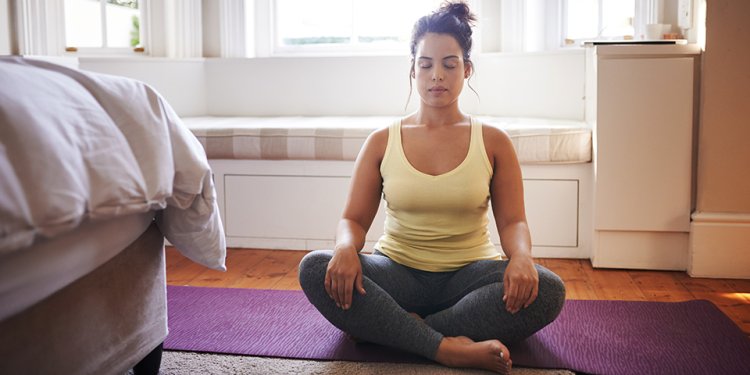How to Start a Meditation Practice
What meditation is, how to start a meditation practice, potential obstacles you may encounter while meditating and how to surmount them

How to Start a Meditation Practice: As modern life becomes increasingly dependent on nonstop information streams from our mobile devices and constant stimulation becomes the norm, people desire a way to disconnect and rest their minds. Meditation is one method to accomplish this.
This article discusses what meditation is, how to start a meditation practice, potential obstacles you may encounter while meditating (and how to surmount them), and the numerous benefits meditation provides.

What Is Meditation?
Let's define meditation as paying attention to the fluctuations of your mind for our purposes. The majority of the time, we are entirely identified with our own thoughts, such that there is no distinction between the thoughts and the thinker. Meditation begins to erode this connection.
There are many different methods of meditation, but three basic ones are:
- Focusing on breath: This technique is based in Buddhist tradition. By focusing on your breath, you're turning your attention away from fixating on any one particular thought. Some people find it helpful to count each inhale and exhale.
- Observing thoughts: A common misconception about meditation is that you're supposed to clear your mind of thoughts. In reality, you'll still have thoughts arise, but this technique allows you to distance yourself from them. Say you think about a huge project due at work while meditating. Instead of holding onto this thought, and following it up with others like, "I'm worried I won't submit it on time," you notice the thought, label it, and let it pass without becoming reactive.
- Body scanning: Body scanning is a method of shifting your focus from your thoughts to your body. You place all of your focus on one specific part of your body, and usually shift your attention to different parts of the body. For instance, you might start at the top of your head and slowly work your way down to your face, neck, shoulders, and so on, until you reach the tips of your toes.
Being kind to yourself and having patience as you meditate is an important part of the practice.
How to Start a Meditation Practice
You don't need much to get started with meditation—as long as you set aside some time during your day and have a willingness to learn, you're well on your way to creating your own unique practice.
1. Designate a Time
Many individuals prefer to meditate first thing in the morning, but if a different time of day works better for you, do so. It is optimal to meditate at the same time every day; however, be forgiving if you are unable to do so. Meditation is an act of self-care at any time.
Your meditation practice need not be protracted, particularly when you are just beginning. Ten to fifteen minutes is an appropriate starting point.
If you practice yoga regularly at home, you can try incorporating meditation at the end.
If you find it difficult to focus on the respiration for ten minutes, begin with five minutes. Before extending the duration, focus on those five minutes. When ready, start by adding one minute to your sitting time. Gradually work your way up.
You will need a timer that will alert you at the conclusion of your meditation session so that you are not continually monitoring the time. Put your phone on vibrate so that you are not tempted to interrupt your meditation if it chimes.
If you use meditation apps, you won't need to set a timer because most applications will automatically tally you in and out of the practice.
2. Create the Space
In addition to selecting a time for practice, you must also locate a location. It does not need to be large or decorated in any particular manner, but it should be away from domestic distractions. Perfect would be a corner of your bedroom or living room. If you wish to play meditation music (there are numerous complimentary recordings available online), you may do so now.
3. Warm Up
Especially if you are going to meditate first thing in the morning, you may want to perform a brief yoga warm-up sequence before seated. If you discover that you do not need to limber up, that is also acceptable.
4. Find a Comfortable Position
If you can recline on the floor, you should bring blankets or a cushion. You may choose to purchase a meditation cushion, known as a zafu, but it is not required. Try a position with crossed legs, such as sukasana. While you may observe others meditating in the lotus position, it may not be a safe or comfortable position to maintain for extended periods.
If you cannot lie on the floor, that is also acceptable. Find a chair that allows you to sit upright with both feet level on the floor.
5. Position Your Hands
You may have seen photographs of individuals meditating with their hands in various mudras. You may attempt any position you have observed, or you may simply rest your hands in your lap. Optionally, the hands can be placed on the knees with the palms facing up or down. Find a position in which you are comfortable.
6. Focus On Your Breath
Close your eyes and resume your seat. Start observing your respiration without altering it. The tendency is to deepen your respiration as soon as you become aware of it. Refuse this impulse.
Concentrate on your inhales and exhales, perhaps focusing on the sensation of air entering and leaving your nostrils. If counting your respiration helps you maintain focus, you can do so. Try visualizing your intrusive thoughts floating away before returning your focus to your breathing.
7. End Your Practice
Open your eyes when your timer goes off. Take a moment after your practice to reflect on how you feel. Move gingerly to your hands and knees if you feel rigid after sitting. Stretching (such as the downward-facing dog) can help you limber up.
Also read: How to Practice Meditation












